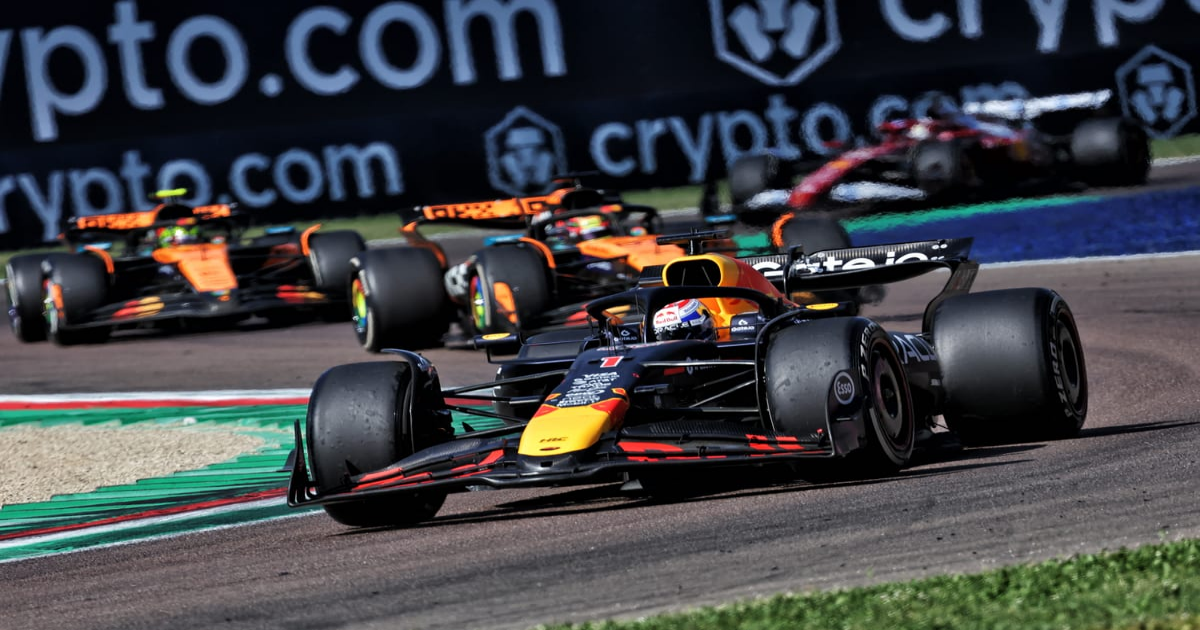Red Bull’s turning of the tables on McLaren to win Formula 1’s Emilia Romagna Grand Prix has left its rival with some head-scratching to do.
On a warm day and with fragile tyres in play, the wise money would have been on pole position man Oscar Piastri doing what he did in similar circumstances at the previous round in Miami and pulling off a dominant win.
But things did not turn out like that and Red Bull beat McLaren at its own game – simply better managing the rubber to produce the first race this season where the McLaren has not been the car to have.
Red Bull team boss Christian Horner openly talked afterwards of his race-winner Max Verstappen being in a place of comfort that he had not been in for a while.
“The first stint was really encouraging because we could see that he was managing more than the guys behind,” he explained.
“He was driving very smartly and still pulling out a gap. And that’s always a happy place to be in. You get the longevity and it’s the first time in quite a while that we’ve been in that position.”
A relative game
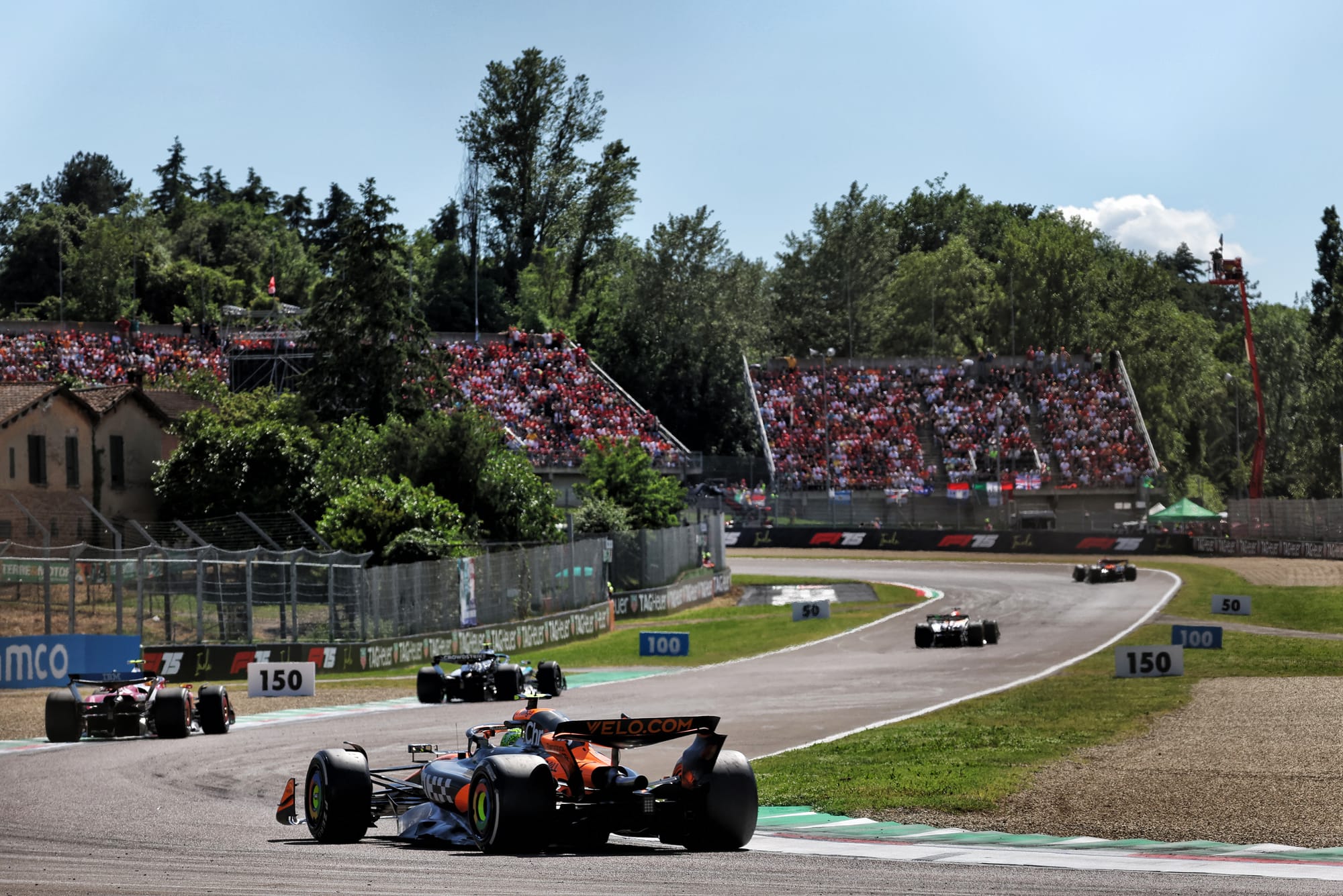
From Red Bull’s perspective though, the biggest eye-opener was not what it could manage itself but why its opposition had no answer for it.
Horner said: “We were sort of more surprised about McLaren’s, probably, lack of performance.”
Indeed, McLaren admitted it needed to go away and try to get to the bottom of what played out.
Central to its answer will be whether the Imola result was because its own performance had dropped away or if it was because Red Bull has made a genuine step forward.
McLaren knew before it had even arrived at Imola that there were some factors that were going to make it a bit more of a challenge than things had been in Miami.
Circuit characteristics, which feature more of the high-speed corners where Red Bull’s RB21 excels so much, were always going to make things harder for Oscar Piastri and Lando Norris when it came to fighting off the ever-present threat of Verstappen.
But this alone was not going to be enough to swing the level of advantage it had in Miami to it being unable to take the fight to Red Bull at all.
As team principal Andrea Stella said: “We knew that it would have been very balanced in qualifying, like we have already seen in Saudi and in Japan, in this kind of fast-flowing circuit.
“But I have to say today [in the race] we were a little surprised, and I have to be honest here, by the pace of Red Bull, which was very competitive.
“Well done to Max, well done to Red Bull – for being able to pull off this kind of performance.”
The Red Bull set-up window
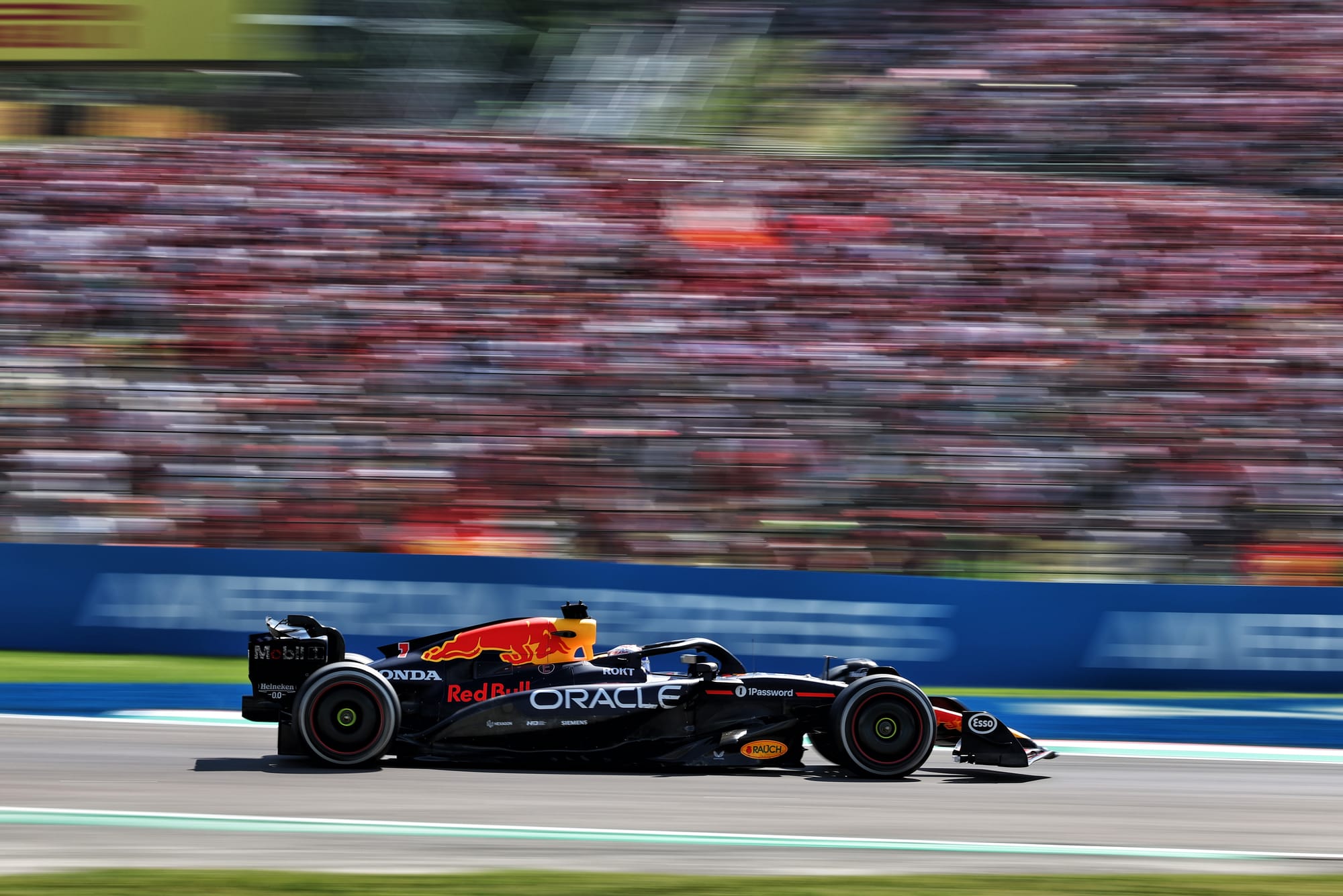
F1 is ultimately a relative game and what McLaren needs to dig into is how much of what played out at Imola was because it did not optimise things, and how much because Red Bull’s RB21 has made solid progress.
A two-stage upgrade from Red Bull, with a new floor in Miami and then tweaks to sidepod inlets, brake ducts and bodywork at Imola, appears to have helped the team solve much of the through-corner balance problem that dogged its early campaign.
Team insiders have talked of Verstappen being happier with the car than he has been for a while – and that can be pretty much confirmed by the lack of angst we heard on the team radio over the weekend compared to what became the norm earlier in the campaign.
What the changes seem to have done is not made the RB21 ultimately faster – for Verstappen was still beaten in qualifying – but instead made it better in races.
By widening the operating window, the balance is much improved. And that brings with it a virtuous circle of the car not sliding and overheating its tyres as much, which then keeps grip levels more consistent and stops the car sliding further.
As Red Bull technical director Pierre Wache said: “I’m not sure it was a big improvement, but it was an improvement in the right direction – opening some set-up [window], and maybe Max able to use the car more.”
But this is not to say that what was on display at Imola means Red Bull has wiped away McLaren’s tyre advantage, because there are some elements that were unique.
The key to success with the super soft compounds that teams had to use at Imola was to keep their surface temperatures down – something that is aided in particular by not sliding the car through high-speed turns.
This is a different degradation dynamic to Miami, where it was all about keeping the core (internal) temperatures in the right operating window.
Staying on top of core management is helped massively by better brake cooling and lower wheel rim temperatures – an area where McLaren is known to have excelled.
Add this changed demand on top of the consequences of the track layout and it is enough to turn a minor disadvantage compared to Red Bull into something bigger in the race.
As Stella said: “I think we know that our car is strong in track layouts like Miami or Bahrain or China, but when it comes to high-speed corners like we have here in Imola, I don’t think we enjoy any particular advantage.”
The strategy factor
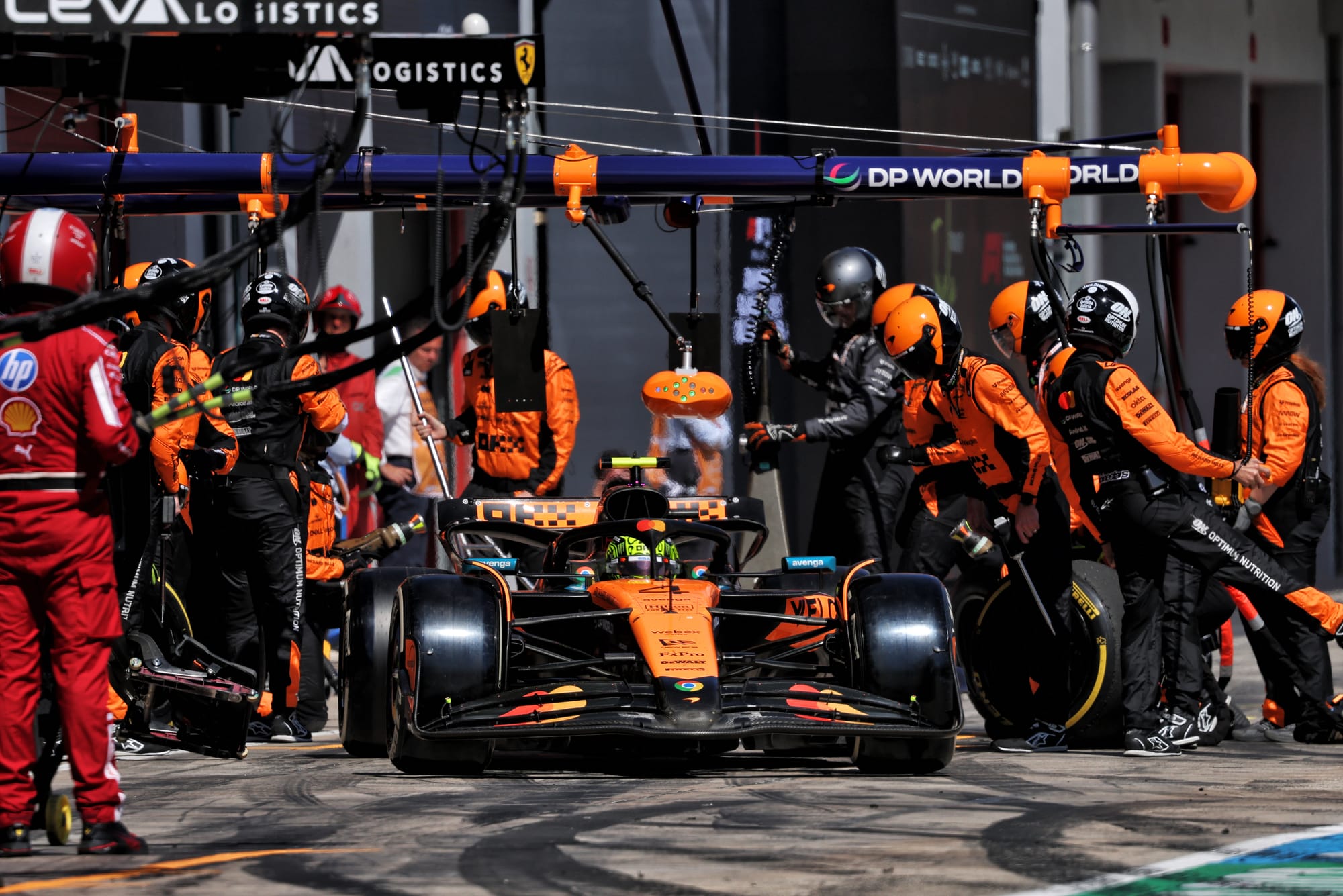
There is an element too of not over-egging the scale of advantage Red Bull had because digging into the details shows things were actually quite even in speed terms with McLaren.
The pace of Verstappen and Norris when both were in clear air was pretty equal – so the dynamics were ultimately not much different to what we saw in Saudi Arabia for example where the race was effectively won by track position.
Piastri’s final result may have been disappointing but the story of his afternoon is of losing out at the first corner and, once falling away in dirty air, McLaren rolling the strategy dice once it knew it wasn’t going to be able to get past Verstappen on track.
Charles Leclerc’s early move to undercut rivals had initially made it look like the hard tyre was going to shine, just as the medium went through a difficult phase.
But in a year where small details really matter, the medium surprised in having a bit more life left – and the hard just fell short of where it needed to be. A couple of tenths of a second performance swing with either compound and the picture of the race would have turned completely.
On both counts Piastri was left on the wrong side of things – at a time when he was on the backfoot because he had lost track position by being too cautious at the first corner.
As Stella said: “In the first stint, somehow if you went through a phase in which the tyres looked like they were degrading heavily then they actually had something more to offer. This is the reason why Lando, Max and some other drivers were going for a one-stop.
“But certainly there was a phase in which the tyres seemed to go off, which is where other drivers deviated onto a two – including Oscar.
“And then the tyres were a factor because at the safety car restart, it was more the fact that the tyres did degrade. So cars on a new tyre could overtake the cars that didn’t change tyres under the safety car.”
A one-off or a turning point?
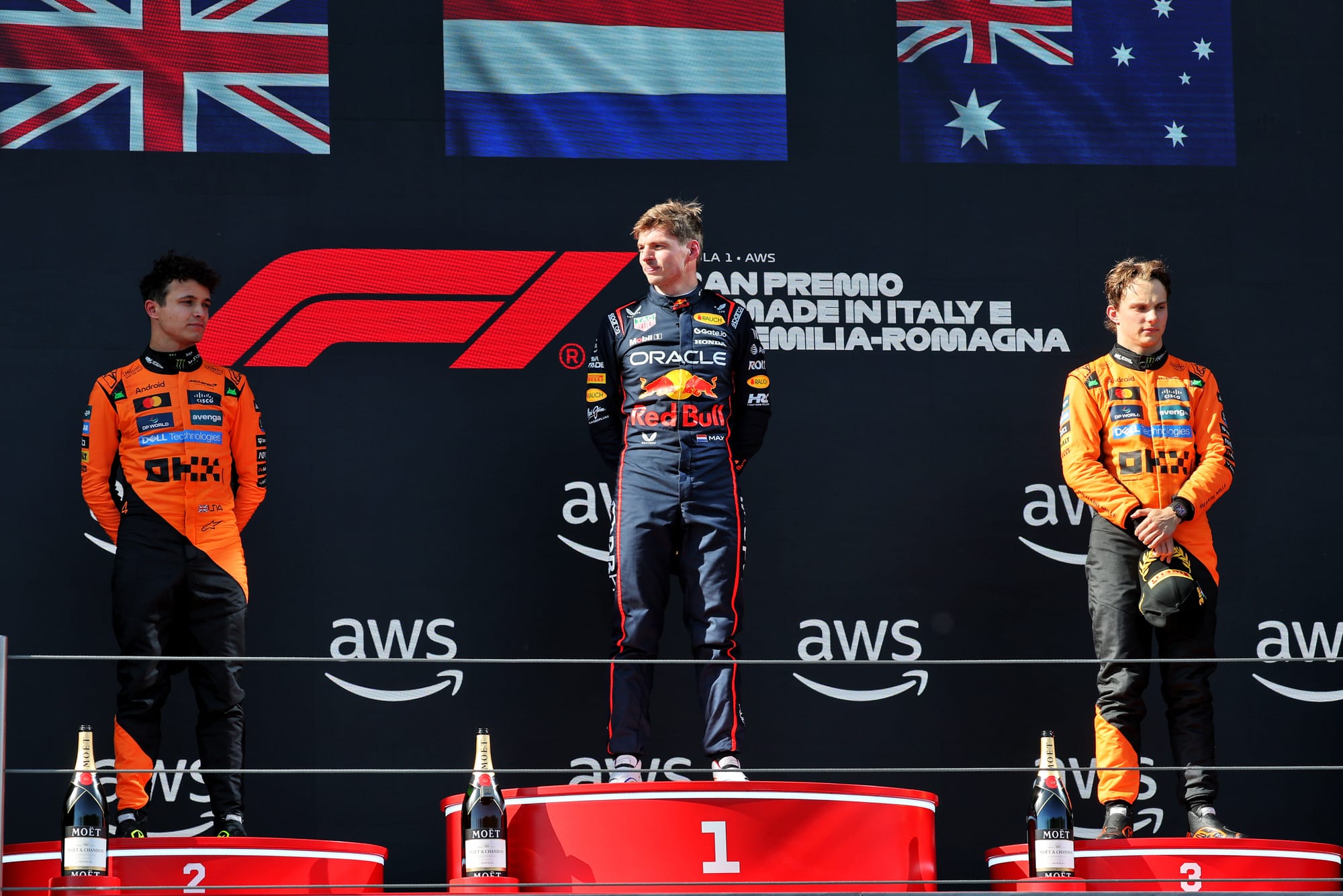
The turnaround between McLaren and Red Bull will inevitably trigger some fresh conspiracies about McLaren’s tyre management genius, and whether any avenues it has been using to exploit things have been shut down by the FIA starting to monitor things more closely.
But the truth of Imola will likely boil down to small details and factors being contributors – and the kind of elements that can still swing things dramatically one way or the other at future races.
Monaco this weekend probably will not offer us a realistic snapshot of where the balance of power lies, because it’s such a unique venue, but the Spanish GP at Barcelona in a fortnight will be more illuminating.
There is a decent combination of high and medium speed corners; it is a race where tyre management is critical, and it will be the first event where F1 is operating under a new flexi wing policing regime. How things play out there could dictate the picture going forward.
From Red Bull’s own perspective after its Imola surprise, the message is clear that one swallow does not make a summer just yet.
As Wache said about whether or not the Imola performance was a confidence boost: “I don’t have any confidence anywhere. We won Japan and we were destroyed in Bahrain and in Miami.
“Clearly it’s not granted in this business. They [McLaren] develop, and they have a very good car. So we still have to push.”
